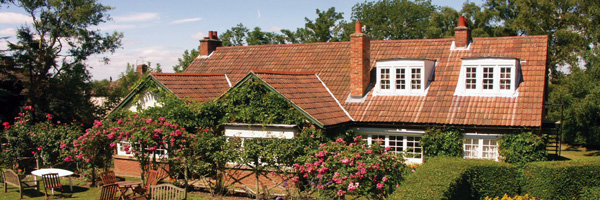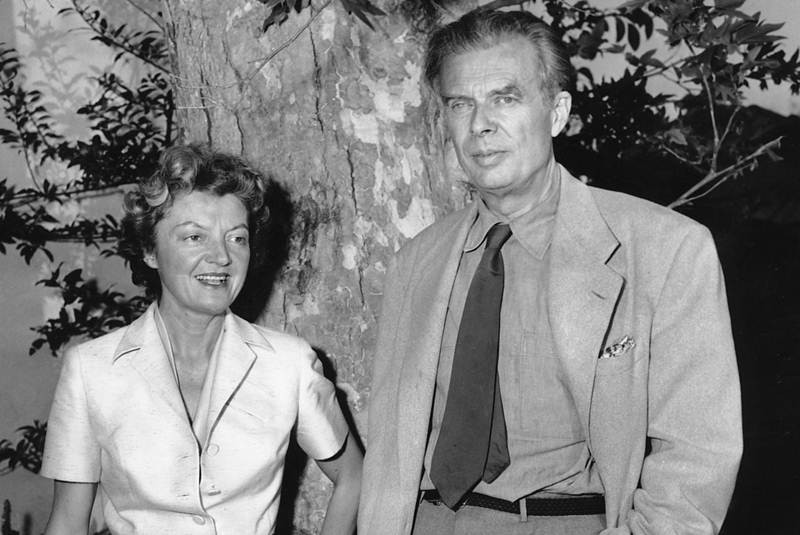In November 1963, C. S. (“Jack”) Lewis knew that his end was near. He had been a widower for three years. In July, he had come out of a coma, only to be diagnosed with late-stage kidney failure. He retired from his post at Cambridge University, choosing to die at home in the Kilns, where he lived with his brother, Major Warren (”Warnie”) Lewis, three years his senior.
On Friday, November 22, Jack arose at 8:00 a.m. GMT to eat breakfast and to look at the crossword puzzle in the paper.
After completing his breakfast and working on the puzzle, he answered four letters by hand.
After eating lunch, he fell asleep in his chair. He later retired to his bedroom upon Warnie’s suggestion.
Around 4:00 p.m., Warnie entered his bedroom to bring him some tea, which he drank.
At 5:30 p.m., Warnie heard a crash coming from the room and entered to find his brother unconscious. Within three or four minutes, C. S. Lewis was dead, exactly one week shy of his 65th birthday.
It was about 11:34 a.m. in the central United States.
Five minutes after Lewis died, at 11:38 a.m. CST [= 5:38 p.m. GMT] on the other side of the Atlantic, the U.S. presidential aircraft Air Force One touched down at Love Field in northwest Dallas, Texas, after a short flight from Carswell Air Force Base west of Fort Worth.
Starting at 11:54 a.m, an open motorcade took President John F. Kennedy and his wife, Jacqueline, along with their entourage and the Secret Service, along a route designed to end at the Dallas Business and Trade Mart, where the president was to give an address at 1:00 p.m.
After Kennedy suffered mortal gunshot wounds to the head at 12:30 p.m., his limousine rerouted to Parkland Memorial Hospital where the 46-year-old president was dead upon arrival.
At 12:40 p.m., CBS network news interrupted their soap opera As the World Turns for anchor Walter Cronkite to announce the president had been shot:
At 1:00 p.m., the doctors at Parkland pronounce Kennedy dead. Acting press secretary Malcolm Kilduff made the announcement to the press at 1:33 p.m., and Cronkite reported the news on live television at 1:38 p.m.:
The 34-year-old Martin Luther King Jr., watching the events on television alongside his wife, Coretta, turned to her and said, “This is what is going to happen to me.” His prophecy came true four and a half years later.
At 1:50 p.m., 24-year-old Lee Harvey Oswald was arrested after a struggle with police in the Texas theatre in Oak Cliff. He would be charged as the lone gunman in the assassination.
At 2:38 p.m. Vice President Lyndon Johnson, with his predecessor’s widow standing at his side wearing her blood-stained pink dress, was sworn in as president aboard Air Force One by Federal Judge Sarah T. Hughes:
West of Dallas about 1,500 miles, in Los Angeles, California, another noteworthy figure lay dying, the 69-year-old English author Aldous Huxley, most famous for his 1932 dystopian novel A Brave New World.
Suffering from advanced laryngeal cancer and hardly able to speak, he wrote a note to his wife, Laura, requesting an injection of LSD, which she gave him at 11:20 a.m. PST (1:20 p.m. CST—15 minutes or so before Cronkite publicly announced Kennedy’s death). When she went to get the LSD in the other room, she heard the TV bulletins about Kennedy being shot.
At 12:20 p.m. (2:20 p.m. CST), Laura gave her husband a second dose of the hallucinogenic drug.
At around 5:00 p.m. CST, Air Force One arrived at Andrews Air Force Base near Washington, D.C., carrying President Johnson, Mrs. Kennedy, and the body of the slain president.
At 7:05 p.m. CST, Lee Harvey Oswald was charged by Dallas police of murdering with malice police officer J. D. Tippit.
Five hours later, at 5:20 p.m. PST (7:20 p.m. CST), Aldous Huxley passed away. In a lengthy letter, his wife described his final moments:
His lower lip began to move as if it were going to be a struggle for air. Then I gave the direction even more forcefully. “It is easy, and you are doing this beautifully and willingly and consciously, in full awareness, in full awareness, darling, you are going towards the light.” I repeated these or similar words for the last three or four hours. Once in a while my own emotion would overcome me, but if it did I immediately would leave the bed for two or three minutes, and would come back only when I could dismiss my emotion. The twitching of the lower lip lasted only a little bit, and it seemed to respond completely to what I was saying. “Easy, easy, and you are doing this willingly and consciously and beautifully—going forward and up, light and free, forward and up towards the light, into the light, into complete love.” The twitching stopped, the breathing became slower and slower, and there was absolutely not the slightest indication of contraction, of struggle. It was just that the breathing became slower—and slower—and slower, and at five-twenty the breathing stopped.
In 1982, philosopher Peter Kreeft wrote an imaginative after-death dialogue between Lewis (an ancient Western theist), Kennedy (a modern Western humanist), and Huxley (an ancient Eastern pantheist). He entitled it Between Heaven and Hell: A Dialog Somewhere Beyond Death with John F. Kennedy, C. S. Lewis & Aldous Huxley. Trevin Wax has a good summary of the book with excerpts.





















